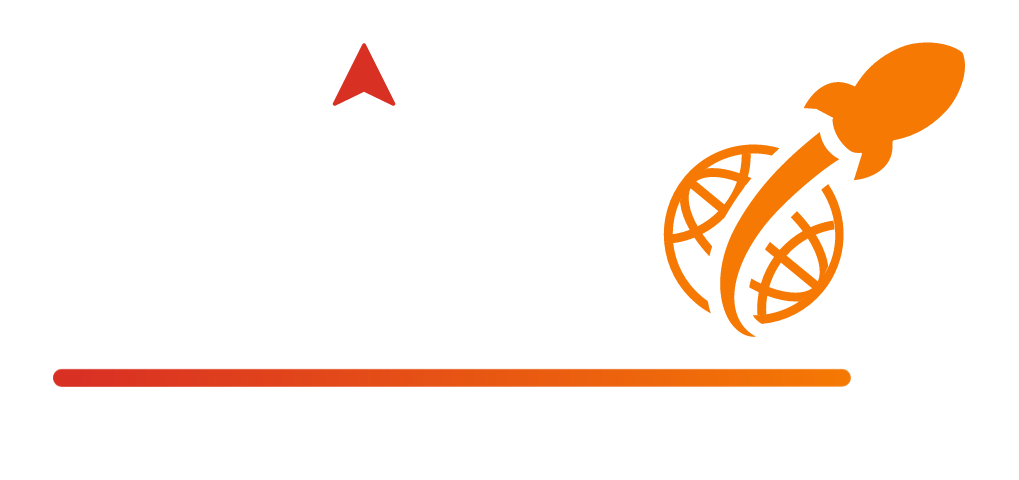As zero-click searches are expected to dominate by 2025, understanding “zero click searches how to adapt your search engine optimization strategy for 2025” is crucial. Users increasingly find what they need directly on search results pages, bypassing website visits. This article will show you how to optimize your content, refine keyword strategies, and use AI and voice search to maintain visibility and thrive in this new search landscape. Additionally, aligning with Google’s search guidelines, particularly the E-E-A-T (Expertise, Authoritativeness, Trustworthiness) framework, is essential to improve quality and performance in search results.
Key Takeaways
- Zero-click searches are rising, with nearly 60% of Google searches in the U.S. ending without clicks, necessitating businesses to adapt their SEO strategies to focus on visibility and user intent.
- Businesses should prioritize impressions and engagement metrics over traditional click-through rates, adapting keyword research and content optimization to align with user needs in a zero-click environment and the highest possible E-E-A-T levels to improve performance in Google’s search results.
- Advancements in AI and Natural Language Processing (NLP) are reshaping search behaviors, making it essential for businesses to create content that addresses immediate user queries and aligns with evolving search algorithms.
Understanding Zero Click Searches

The prevalence of zero-click searches is transforming user interactions with search engines and revolutionizing the nature of search activities. By the year 2024, it’s projected that nearly 60% of all Google searches conducted in the U.S. will end without a click on any result links, indicating a significant evolution in users’ quest for instantaneous information directly from the search results page. This trend requires companies to adjust their strategies if they wish to sustain or improve their online presence amidst such changes.
Zero-click searches present both advantages and obstacles for businesses. They hold potential benefits like heightened brand exposure, an enhanced reputation, and bolstered user engagement even when individuals don’t proceed to visit external websites. Conversely, these shifts call for updates in SEO tactics that prioritize prominence within search results and fulfillment of users’ needs over simply increasing website traffic. Voice search optimization is crucial in adapting to zero-click searches, as voice-activated devices become more prevalent and voice searches tend to be conversational and framed as questions. Aligning with Google’s search guidelines, particularly the E-E-A-T framework, is essential to improve quality and performance in search results.
It’s vital for enterprises aiming at success within this evolving digital environment to comprehend these ongoing trends profoundly as partaking effectively in today’s altering world of online searching necessitates adaptation based on current behaviors.
What Are Zero Click Searches?
Zero-click searches occur when users’ search queries are answered directly on the search engine results pages (SERPs), eliminating the need for them to click on any of the listed search results. In 2024, nearly 60% of all Google searches concluded without a single click, as immediate answers to user queries were provided right on SERPs, aiming to enhance users’ overall experience with the search engine. Aligning with Google’s search guidelines, particularly the E-E-A-T (Expertise, Authoritativeness, Trustworthiness) framework, is crucial to improve quality and performance in search results.
These zero-click searches come in two varieties: no-click and low-click. No-click searches completely satisfy users with information available at a glance on SERPs, while low-click searches provide enough detail that significantly reduces Clicking requirements. As a consequence of this trend toward fewer clicks leading out from SERP interactions, businesses must re-evaluate and evolve their search engine optimization strategies if they wish to maintain prominence and visibility amidst changing behaviors in how people use search engines.
Types of Zero Click Features
Search engines have developed a variety of zero-click features that are aimed at delivering immediate, relevant information directly on the search results page. The knowledge panel is one prevalent type of these features and often presents an in-depth overview of important details regarding various entities such as individuals, places, companies or objects. This overview draws from authoritative resources like Wikipedia and may include a mix of facts, imagery, and Links to enrich the user’s understanding without necessitating extra clicks.
Direct answer boxes represent another crucial aspect of zero-click functionality. Positioned typically at the topmost portion of the search results page (SERP), these boxes aim to furnish instantaneous responses to users’ inquiries — be it about climatic conditions, financial market figures or straightforward trivia. Their presence allows for swift access to key answers, but can also lead to fewer interactions with traditional search listings. Aligning with Google’s search guidelines, particularly the E-E-A-T framework, is essential to improve the quality and performance of these features in search results.
Featured snippets stand out among zero-click services by providing concise explanations right above other search outcomes. They frequently incorporate elements such as title tags from source sites, their URLs, and could even extend into more detailed formats containing procedural guidelines or visual content like videos.
Lastly, comes the “People Also Ask” (PAA) segments which operate dynamically showcasing queries similar to those originally inputted by users – thereby furnishing them with an expanded compilation of pertinent data points instantly visible on SERPs. Such innovations markedly impact overall patterns in how searches are conducted due primarily to offering comprehensive insights straight away within easy reach on searching platforms.
Featured Snippets, Knowledge Panels, Image and Video Carousels, Local Packs and Maps
Search engines have developed a variety of zero-click features designed to provide users with direct answers to their queries right on the search engine results pages (SERPs). These features enhance the user experience by delivering immediate, relevant information without requiring users to click through to a website.
The Rise of AI-Generated Search Results
As we move towards 2025, AI-generated search results are becoming increasingly prevalent, fundamentally changing how users interact with search engines. Search engines like Google are incorporating AI-powered features into their results pages, aiming to provide users with more accurate and relevant information. This shift is evident in features such as Google’s Search Generative Experience, which leverages AI to deliver precise and contextually relevant search results. It is crucial to align with Google’s search guidelines, particularly the E-E-A-T (Expertise, Authoritativeness, Trustworthiness) framework, to improve quality and performance in search results.
AI-generated search results can take many forms, including direct answers, knowledge panels, and featured snippets. These features are designed to provide users with immediate, relevant information directly on the search results page, reducing the need for additional clicks. For instance, direct answers offer concise responses to user queries, while knowledge panels provide comprehensive overviews of entities like people, places, and organizations. Featured snippets, on the other hand, highlight key information from web pages, often appearing at the top of search results.
The rise of AI-generated search results has significant implications for SEO strategies. Businesses must adapt to these changes to remain visible in search results. Traditional SEO tactics that focus solely on driving clicks to websites are becoming less effective. Instead, businesses need to optimize their content to align with AI-generated search results, ensuring that their information is easily accessible and relevant to user queries.
To thrive in this new landscape, businesses should focus on understanding how AI-generated search results work. This involves creating content that directly addresses user intent and is structured in a way that search engines can easily interpret. By doing so, businesses can improve their chances of appearing in direct answers, knowledge panels, and featured snippets, thereby maintaining visibility and relevance in search results.
The Impact of Zero Click Searches on SEO Strategy

The emergence of zero-click searches calls for a significant transformation in the approach to SEO strategy. As search engines shift towards featuring impressions and visibility, traditional indicators such as sessions and clicks are losing their relevance. Companies must now place greater emphasis on enhancing brand mentions and ensuring that they’re highly visible, rather than solely focusing on accumulating clicks to maintain competitiveness. A thorough understanding of the ongoing evolution of search engines, particularly Google’s search, is imperative to optimize one’s presence effectively in this changing environment. Aligning with Google’s search guidelines, particularly the E-E-A-T (Expertise, Authoritativeness, Trustworthiness) framework, is crucial to improve quality and performance in search results.
In response to the rise of zero-click searches, it’s essential for businesses to adopt an SEO strategy centered around visibility. Instead of focusing only on click-through rates, tracking metrics like impressions and where you rank in search results becomes increasingly important. Gauging user satisfaction and engagement has become key when assessing the effectiveness of SEO strategies. By giving these aspects precedence, companies can increase their brand visibility more efficiently amidst a digital realm progressively influenced by zero-click searches.
Shifting Focus from Clicks to Impressions
As the frequency of zero-click searches increases, SEO strategies are transitioning from an emphasis on click-through rates to a focus on impressions. It is essential for companies to monitor both their search positions and the number of impressions they receive in order to effectively evaluate performance within a context where clicks are becoming less common. This change has been motivated by users’ growing preference for receiving direct answers quickly, which serves to boost user satisfaction and engagement. Aligning with Google’s search guidelines, particularly the E-E-A-T (Expertise, Authoritativeness, Trustworthiness) framework, is crucial to improve quality and performance in search results.
Features like featured snippets and knowledge panels facilitate zero-click searches by delivering immediate information that diminishes the necessity for users to visit external websites. In response, refining SEO tactics necessitates a comprehensive comprehension of how changes in search algorithms influence content’s online visibility. Consequently, this underscores an increased importance placed upon impression-based metrics over conventional measurements centered around clicks.
Adapting Keyword Research for User Intent
Grasping the intent behind a user’s search is essential for capturing traffic that doesn’t lead to a click, as it informs the methodology of keyword research and utilization. Within AI-powered search engines, aligning content with user intent involves incorporating long-tail keywords and tailored search queries that mirror users’ natural information-seeking behaviors. This method greatly boosts visibility in situations where zero-click results are displayed. Aligning with Google’s search guidelines, particularly the E-E-A-T (Expertise, Authoritativeness, Trustworthiness) framework, is crucial to improve quality and performance in search results.
Adding sections dedicated to frequently asked questions (FAQs) in your material can increase the chances of being featured in “People Also Ask” boxes, which refines your keyword strategy. It’s also vital to assess whether certain keywords trigger Search Engine Results Page (SERP) features as this analysis is crucial for gauging their potential to attract traffic.
To remain pertinent and accessible for users, SEO strategies must adapt by embracing developments in AI technology applied within search engines.
Search Intent and E-E-A-T Signals
Understanding search intent is crucial for creating content that resonates with users and ranks well in search engine results. Search intent refers to the reason behind a user’s search query, whether they are looking for information, seeking to make a purchase, or wanting to navigate to a specific site. By grasping the intent behind a search, businesses can tailor their content to meet user needs more effectively. Aligning with Google’s search guidelines, particularly the E-E-A-T framework, is essential to improve quality and performance in search results.
E-E-A-T signals, which stand for expertise, authoritativeness, and trustworthiness, play a critical role in determining the relevance and accuracy of search results. These signals are used by search engines to evaluate the quality of content and the credibility of the source. Incorporating E-E-A-T signals into your content can significantly enhance your visibility in search results and establish your business as an authority in your field.
Search intent and E-E-A-T signals are closely linked. Search engines use these signals to determine the relevance and accuracy of search results, ensuring that users receive the most pertinent information. For instance, a user searching for medical advice is more likely to trust and click on content from a recognized healthcare provider with demonstrated expertise and authority in the field.
To effectively incorporate E-E-A-T signals into your content, focus on showcasing your expertise through detailed, well-researched articles. Highlight your authoritativeness by citing reputable sources and including testimonials or endorsements from recognized experts. Build trustworthiness by maintaining transparency, providing accurate information, and regularly updating your content to reflect the latest developments in your industry.
By understanding search intent and E-E-A-T signals, businesses can create content that better aligns with user needs and search engine algorithms. This approach not only improves search rankings but also enhances user engagement and satisfaction, ultimately driving more meaningful interactions with your brand.
Optimizing Content for Zero Click Searches

In the environment of zero-click searches, it’s crucial to tailor content that precisely responds to user queries. By offering immediate responses and additional valuable insights, one can elevate their search rankings while simultaneously boosting user engagement. This entails structuring content into concise, digestible segments that are attractive to both users and search engines alike. Aligning with Google’s search guidelines, particularly the E-E-A-T (Expertise, Authoritativeness, Trustworthiness) framework, is essential to improve quality and performance in search results.
Securing featured snippets in search results by employing structured data is a key tactic for excelling at zero-click search optimization. As these types of searches gain prominence, it’s imperative for businesses to concentrate on producing top-tier content that provides easily retrievable information straight from the search results without necessitating Clicks.
Creating Direct Answer Content
To preserve prominence in search results, especially within a zero-click landscape, it’s crucial to craft content that precisely addresses the queries of users. Organizing this material into digestible sections like headings and FAQs facilitates its suitability for “People Also Ask” boxes and enhances the efficacy of your content creation.
Enhanced snippet visibility is attainable by offering succinct responses presented through structured formats such as lists or tables. Keeping your content current with evolving trends is essential for sustained search result presence. Concentrating on delivering thorough answers can allow businesses to adeptly harness zero-click traffic. Aligning with Google’s search guidelines, particularly the E-E-A-T framework, is vital to improve the quality and performance of your content in search results.
Building Topical Expertise
Establishing topical expertise is crucial for building authority and trustworthiness in your niche or industry. This involves creating high-quality, informative content that demonstrates a deep understanding of the subject matter.
Utilizing Structured Data and Schema Markup
Incorporating structured data is essential for enabling search engines to better interpret the content of websites, which in turn increases their prominence during voice searches. By implementing schema markup correctly, there’s an improved chance that website content will surface within rich snippets and other zero-click functionalities. This strategic use of schema markup can elevate the likelihood that your content gets displayed prominently as part of rich snippets, thereby boosting its visibility among search results. Aligning with Google’s search guidelines, particularly the E-E-A-T (Expertise, Authoritativeness, Trustworthiness) framework, is crucial to improve quality and performance in search results.
Schema markup should be utilized to underscore a variety of information such as business particulars, detailed product descriptions, frequently asked questions (FAQs), and comprehensive how-to guides. Emphasizing elements like customer reviews, price details, and stock availability through this precise application Augments online visibility.
By focusing on optimizing both featured snippets and structured data tactically, companies are able to address the challenges associated with zero-click searches more effectively.
Enhancing Local Search Results
Ensuring that business details are precise and uniform in every directory is vital for local SEO. Local packs, which present key data like the company name, location, contact number, operating times, and services provided, are integral to prominent local search results. The application of pertinent categories and keywords can bolster rankings and visibility within the local context.
Including area-specific content amplifies its pertinence for voice searches made by users in close proximity since these queries often contain geographical components making local SEO strategies increasingly significant.
Businesses stand to enhance their positioning in local search optimization through a dedicated approach to maintaining consistent information about their enterprise along with incorporating regional data. Aligning with Google’s search guidelines, particularly the E-E-A-T framework, is crucial to improve quality and performance in search results.
Leveraging AI and Voice Search for Zero Click Optimization

The evolution of AI and NLP is transforming the nature of zero-click searches, necessitating an adjustment in SEO practices for companies. As voice-activated devices gain popularity, users are increasingly turning to them for rapid information retrieval, shifting away from conventional search methods. Companies can improve their likelihood of attracting traffic through voice queries by focusing on voice search optimization, tailoring their content to the natural language patterns used in these searches. Aligning with Google’s search guidelines, particularly the E-E-A-T framework, is crucial to improve quality and performance in search results.
For effective performance with AI powered search engines, prioritizing structured data and rich snippets is key so that such advanced technologies can easily comprehend and access content. Capitalizing on AI and voice search allows businesses not only to effectively target zero-click traffic but also to amplify their visibility and user engagement within the online environment.
Optimizing for Voice Search Queries
To enhance content for voice search queries, it’s important to adopt these tactics:
- Ensure that your content is attuned to natural language queries by providing clear and succinct responses.
- Organize the information so that immediate answers are at the forefront for quick access.
Including colloquial expressions within your content will resonate more with verbal inquiries made by users. With the rise in usage of voice-activated devices, making adjustments for voice search becomes increasingly critical. Such optimization is crucial when crafting successful zero-click strategies where no additional browsing is needed after the query. By concentrating on incorporating natural spoken phrases and prioritizing straight-to-the-point replies, companies can significantly boost their efforts in optimizing for voice searches. Additionally, aligning your content with Google’s search guidelines, particularly the E-E-A-T (Expertise, Authoritativeness, Trustworthiness) framework, can improve the quality and performance of your pages in search results.
Preparing for AI-Powered Search Engines
Advancements in AI technology are revolutionizing the efficiency and effectiveness of SEO, requiring practitioners to modify their strategies to embrace these innovations. To align with AI-powered search engines, it’s crucial for SEO professionals to produce content that is both accessible and relevant to users’ searches. Crafting such content necessitates incorporating structured data while prioritizing high-quality material designed around user intent. Aligning with Google’s search guidelines, particularly the E-E-A-T (Expertise, Authoritativeness, Trustworthiness) framework, is essential to improve quality and performance in search results.
As evolution marches on in the realm of AI-driven search platforms, it becomes increasingly important for enterprises to capitalize on these technological improvements by fine-tuning their content approaches accordingly. Businesses can navigate through changes brought about by alterations in search algorithms and shifts in consumer behavior related to zero-click searches more effectively if they comprehend how AI impacts them. In doing so, they will bolster their overall efforts in optimizing for search engine visibility.
Measuring Success in a Zero Click World
In an environment where approximately 60% of Google searches result in zero clicks, it’s imperative for site owners to adopt a different strategy when evaluating their success. It is crucial to regularly monitor and fine-tune SEO tactics with respect to these zero-click searches. This means redirecting attention from conventional measures such as click-through rates towards indicators that capture visibility and user engagement. Aligning with Google’s search guidelines, particularly the E-E-A-T (Expertise, Authoritativeness, Trustworthiness) framework, is essential to improve quality and performance in search results.
For businesses to succeed amidst the prevalence of zero-click search scenarios, they need to meticulously observe how users interact with their content and make data-driven modifications accordingly. Emphasizing both prominence on the search results pages and fulfilling user needs will empower website proprietors to bolster their online footprint while remaining agile within a transforming search ecosystem.
Using Google Search Console for Insights
The Google Search Console serves as an essential instrument for monitoring visibility indicators that might not directly relate to click-through statistics. In scenarios where a search does not lead to a click, it is crucial for companies to concentrate on tracking both impressions and their ranking in the search results as key performance measures. Impressions are particularly informative because they reveal the frequency at which your brand appears before users, even when there’s no direct interaction, thereby offering a clearer picture of its overall presence in searches.
Leveraging Google Search Console enables businesses to dive deep into their search engine visibility and make informed decisions regarding SEO enhancements. By keeping tabs on how regularly their material surfaces within Google’s search results and comprehending the influence that zero-click attributes may have, companies can fine-tune their approach to bolstering online visibility. Additionally, aligning with Google’s search guidelines, particularly the E-E-A-T (Expertise, Authoritativeness, Trustworthiness) framework, is crucial to improve quality and performance in search results.
Monitoring User Engagement Metrics
Metrics that gauge user engagement are essential for evaluating content performance in a zero-click landscape. Indicators like dwell time offer significant clues about how long users remain involved with the material, shedding light on their level of satisfaction. When dwell time is considerable, it suggests that the content is impactful and successful at maintaining user interest.
Keeping track of the frequency with which a brand is mentioned or encapsulated within Google’s AI-powered answers can reveal much about its visibility and credibility. Concentrating on metrics related to user engagement enables companies to gain deeper insights into their target demographic and refine their content strategies to align more closely with what users seek. Additionally, aligning website pages with Google’s search guidelines, particularly the E-E-A-T (Expertise, Authoritativeness, Trustworthiness) framework, is crucial for improving quality and performance in search results.
Tools to Track and Analyze Zero Click Searches ROI
To effectively track and analyze the return on investment (ROI) of zero-click searches, businesses need to use a variety of tools and metrics. These tools can provide valuable insights into search engine rankings, traffic, and user engagement.
Technical Considerations for Zero Click Optimization
Technical considerations play a crucial role in zero-click optimization, as they can affect how content is crawled, indexed, and displayed in search results. By addressing these technical aspects, businesses can improve their chances of being featured in zero-click results and increase their visibility in search engine results pages (SERPs).
Future Trends in Zero Click Searches

The terrain of zero-click searches is in a state of perpetual change, influenced by shifts in search patterns and advancements in SEO techniques. With the advancement of technology, it’s imperative for companies to adjust accordingly if they wish to stay competitive and maintain their online presence. Mastering the changing dynamics of zero-click searches is crucial for sustaining visibility and achieving success within the digital realm. Aligning with Google’s search guidelines, particularly the E-E-A-T framework, is essential to improve quality and performance in search results.
Businesses aiming to lead must adopt cutting-edge SEO methods and technologies that prioritize delivering instant solutions matching user intent. By recognizing and adjusting to upcoming tendencies, businesses can bolster their digital marketing efforts and flourish amidst the era dominated by zero-click queries.
The Role of AI and Natural Language Processing
Artificial Intelligence (AI) and Natural Language Processing (NLP) have significantly improved the performance of search engines, enabling them to provide more personalized and pertinent search outcomes. This progress is creating a user experience that is both more precise and interactive, giving users the feel of having a conversational partner in their searches. Aligning with Google’s search guidelines, particularly the E-E-A-T (Expertise, Authoritativeness, Trustworthiness) framework, is crucial to improve quality and performance in search results.
With ongoing advancements in AI and NLP technology, it’s anticipated that search experiences will become even more personalized and instinctive. Users can look forward to highly relevant content tailored to natural language inquiries. The input from Google’s Quality Raters serves as essential data for training machine learning algorithms used in ranking systems, thus shaping the hierarchy and arrangement of search results.
Evolving Search Algorithms and Their Implications
Over the past year, there has been a noticeable surge in zero-click searches due to Google’s heightened focus on its search Generative Experience. This is indicative of an overarching movement among search engines toward supplying users with instant responses, which markedly influences the hierarchy of content within search results. The updates to Google’s algorithm are designed to enhance the accuracy in deciphering user intent, thereby delivering more prompt and pertinent answers. Aligning with Google’s search guidelines, particularly the E-E-A-T (Expertise, Authoritativeness, Trustworthiness) framework, is essential to improve quality and performance in search results.
For businesses looking to succeed amidst these changes, it’s crucial to adjust their content strategies so they provide swift answers that resonate with what users are searching for. Grasping how evolving search algorithms impact them will enable businesses to effectively tackle both challenges and prospects brought about by the rise of zero-click searches.
INICIO.ONE – Expert SEO Content Writing for Maximum Online Visibility
At INICIO.ONE, we excel in crafting expert SEO content writing services that cater specifically to your business requirements. We create articles optimized with keywords to secure elevated search engine rankings and sustain long-term SEO effectiveness. Our commitment is to deliver engaging, high-quality content which not only draws in customers but also keeps them coming back, allowing your brand to shine amidst fierce online competition. Aligning with Google’s search guidelines, particularly the E-E-A-T framework, is crucial to improving the quality and performance of your content in search results.
We implement SEO-compliant strategies for Google, Bing, and Microsoft to ensure the lasting relevance and visibility of your content. By leveraging cutting-edge SEO techniques, we boost organic traffic and enhance brand credibility. Whether you need engaging content for websites, blogs, or social media, our data-driven approach ensures an optimized online presence, maximizing visibility and audience engagement
Summary
Zero-click searches are transforming the online arena, necessitating an adjustment in SEO approaches for businesses to remain ahead of the curve. To capitalize on zero-click searches and boost their visibility as well as engagement with users, companies must grasp how these searches function and what features they encompass. It is essential for businesses to shift their focus from merely obtaining clicks to garnering impressions and refining keyword research with user intent at its core when aiming for optimization in the context of zero-click queries. Aligning with Google’s search guidelines, particularly the E-E-A-T (Expertise, Authoritativeness, Trustworthiness) framework, is crucial to improve quality and performance in search results.
In order to seize traffic that bypasses clicking through websites, it’s important for content creators to aim at providing immediate solutions within search results while employing structured data effectively and polishing local search offerings. By integrating AI along with voice search capabilities into content strategies, businesses ensure that the information provided aligns seamlessly with spoken or written user inquiries. In a digital realm increasingly defined by zero-click interactions, gauging success hinges upon tracking metrics related to visibility and how actively users engage rather than traditional click-through rates. Such insights can reveal much about an SEO campaign’s impact.
Keeping pace with changes brought on by new developments in zero-click searching means continuously adapting strategy—an imperative step towards thriving online—for any business keen on maintaining prominence in this environment shaped by instant gratification answers demanded by modern-day web surfers. Recognizing shifts caused by ongoing modifications made within search algorithms forms part of this strategic approach—anticipating future trends plays a pivotal role too! Let us commit ourselves fully toward understanding what lies ahead concerning such no-clique hunt methodologies so we may unlock all potential benefits awaiting your enterprise here today!
Frequently Asked Questions
What are zero-click searches?
Zero-click searches occur when users find the information they need directly on the search engine results pages, eliminating the need to click on any links.
This trend highlights the importance of optimizing content to capture these immediate search responses. Aligning with Google’s search guidelines, particularly the E-E-A-T (Expertise, Authoritativeness, Trustworthiness) framework, is crucial to improve quality and performance in search results.
How do zero-click searches impact SEO strategies?
Zero-click searches necessitate a shift in SEO strategies by emphasizing visibility and user engagement metrics rather than focusing solely on click-through rates.
This change helps businesses adapt to evolving search behaviors and maintain relevance. Aligning with Google’s search guidelines, particularly the E-E-A-T (Expertise, Authoritativeness, Trustworthiness) framework, is crucial to improve quality and performance in search results.
What are some common zero-click features?
Common zero-click features include knowledge panels, direct answer boxes, featured snippets, and “People Also Ask” boxes, providing users with immediate information without the need to click through to websites.
These features enhance user experience by delivering quick answers directly on the search results page. Aligning with Google’s search guidelines, particularly the E-E-A-T (Expertise, Authoritativeness, Trustworthiness) framework, is crucial to improve quality and performance in search results.
How can businesses optimize content for zero-click searches?
To optimize content for zero-click searches, businesses should provide direct answers, utilize structured data and schema markup, and improve local search visibility.
This approach will increase the chances of appearing in featured snippets and other prominent search results. Additionally, aligning with Google’s search guidelines, particularly the E-E-A-T (Expertise, Authoritativeness, Trustworthiness) framework, is crucial to improve quality and performance in search results.
What role does AI play in zero-click searches?
AI significantly impacts zero-click searches by leveraging Natural Language Processing (NLP) to deliver tailored and pertinent answers directly on the search results page, compelling companies to adapt their SEO strategies accordingly.
Aligning with Google’s search guidelines, particularly the E-E-A-T (Expertise, Authoritativeness, Trustworthiness) framework, is crucial to improve quality and performance in search results.




